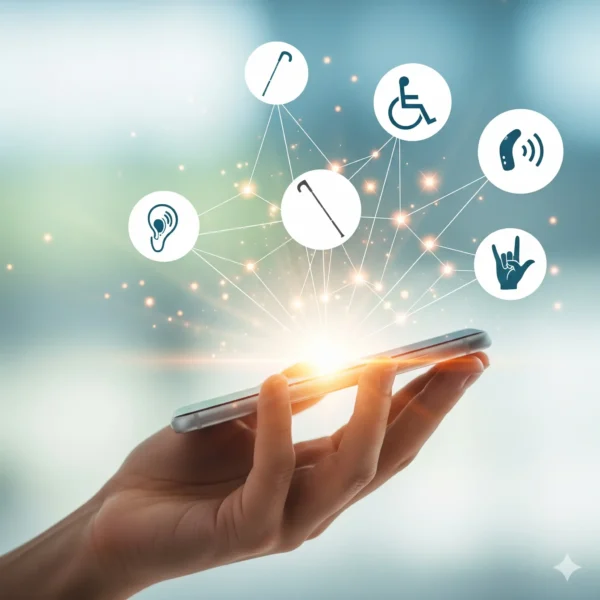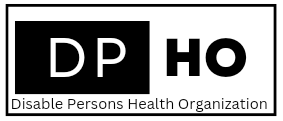1. United States Disability Helpline
Helplines regarding disability. The ADA Information Line (1-800-514-0301) is the backbone of disability guidance in the U.S. It provides clarity on rights, workplace accommodations, and accessibility. Other services include the Veterans Crisis Line (988, then press 1) for military members living with disabilities.
Key Services
- Legal rights and ADA compliance.
- Workplace accommodations.
- Crisis and suicide prevention.See MOre: Health Matters with Vision Loss 2025
2. Canada Disability Helpline

The Canadian Human Rights Commission Helpline (1-888-214-1090) and provincial hotlines connect people with benefits and advocacy. Provinces also run 24/7 crisis lines.
Key Services
- Filing discrimination complaints.
- Provincial accessibility advice.
- Mental health counseling.
3. United Kingdom Disability Helpline
Scope’s Helpline (0808 800 3333) offers free advice on benefits, rights, and daily living support.
Key Services
- PIP and DLA application support.
- Equality Act rights.
- Local advocacy connections.
4. Australia Disability Helpline
The National Disability Gateway (1800 643 787) acts as a one-stop resource.
Key Services
- Housing and transport advice.
- Emergency referrals.
- NDIS guidance.
5. India Disability Helpline
India’s Department of Empowerment of Persons with Disabilities runs toll-free helplines. NGOs fill regional gaps with local-language support.
Key Services
- Inclusive education rights.
- Legal aid for discrimination cases.
- Counseling in regional dialects.
6. Pakistan Disability Helpline

The Pakistan Bait-ul-Mal Helpline (0800-66666) provides social protection support, while NGOs like STEP help with job placements.
Key Services
- Financial stipends.
- Disability employment quotas.
- Rehabilitation services.
7. Germany Disability Helpline
The Federal Participation Helpline (0800 000 9587) empowers citizens under the Federal Participation Act.
Key Services
- Workplace modification rights.
- Housing accessibility.
- Licensed psychological counseling.
8. France Disability Helpline

The MDPH helplines guide families through benefits and schooling.
Key Services
- Applying for AAH benefits.
- School inclusion planning.
- Healthcare rehabilitation access.
9. Japan Disability Helpline
The Disability Support Helpline (03-5282-0033) and municipal services support aging populations.
Key Services
- Home modification advice.
- Employment quota law guidance.
- Isolation-focused counseling.
10. Brazil Disability Helpline
Dial 100 (Disque Direitos Humanos) includes disability discrimination reports.
Key Services
- Workplace rights enforcement.
- BPC benefit guidance.
- NGO support networks.
11. South Africa Disability Helpline
South Africa operates the Department of Social Development Hotline (0800 220 250) with NGO partnerships.
Key Services
- Disability grants guidance.
- Accessible transport solutions.
- Domestic violence support.
12. Italy Disability Helpline
Italy’s National Anti-Discrimination Office (UNAR) Helpline 800 90 10 10 supports inclusion.
Key Services
- Workplace integration.
- Social benefits navigation.
- Housing accessibility advice.
13. Mexico Disability Helpline
CONADIS (01-800-822-4460) connects families to disability rights information.
Key Services
- Disability pension details.
- Educational accommodations.
- Discrimination complaints.
14. Saudi Arabia Disability Helpline
The King Salman Center for Disability Research Helpline offers nationwide support.
Key Services
- Inclusive education planning.
- Social allowances.
- Rehabilitation and assistive tech.
15. China Disability Helpline
The China Disabled Persons’ Federation (12385) runs hotlines in every province.
Key Services
- Assistive technology provision.
- Workplace inclusion.
- Accessible transport advocacy.
16. New Zealand Disability Helpline
The Healthline (0800 611 116) and local Disability Information Centres provide free advice.
Key Services
- Independent living planning.
- Benefits and subsidies.
- Community inclusion support.
17. Ireland Disability Helpline
The National Disability Authority Information Line provides rights-based advice.
Key Services
- Employment supports.
- Inclusive education guidance.
- Disability allowance applications.
18. Kenya Disability Helpline
The National Council for Persons with Disabilities Helpline connects citizens with essential resources.
Key Services
- Mobility aids provision.
- Education scholarships.
- Micro-grant funding.
19. Spain Disability Helpline
Spain’s CERMI Helpline works with NGOs to protect disability rights.
Key Services
- Social integration programs.
- Workplace accessibility enforcement.
- Healthcare advocacy.
20. Philippines Disability Helpline
The NCDA Disability Hotline supports families with inclusive services.
Key Services
- Education and scholarships.
- Rehabilitation referrals.
- Disaster relief accessibility.
Conclusion
Across continents, disability helplines serve as a safety net and a voice of reassurance. Whether offering legal aid, connecting people to benefits, or simply listening, these services transform isolation into empowerment. No matter where you are in the world, these numbers prove that help is only a phone call away.
✅ Support Local Initiatives – Volunteer or donate to organizations providing Braille books and devices.
✅ Encourage Inclusive Tech – Advocate for apps, websites, and devices with Braille compatibility.
✅ Raise Awareness Online – Use social media to amplify campaigns and share real stories.
✅ Educate Yourself – Learn the basics of Braille to better understand the lived experience.
✅ Celebrate Global Efforts – Recognize how different countries innovate and share best practices.
FAQs
1. Why is Braille still important in the digital age?
Braille remains crucial because it provides literacy, independence, and equal access that audio alone can’t replace.
2. Which countries are leading in Braille technology?
The U.S., Japan, and the U.K. are leaders, but many countries like India and South Korea are rapidly innovating.
3. How can schools promote Braille literacy?
By integrating Braille into mainstream education, offering training for teachers, and providing accessible textbooks.
4. Is Braille the same worldwide?
Yes, there’s a standardized system, but countries adapt it for local languages and cultural needs.
5. What challenges do developing countries face with Braille?
High costs of Braille materials, lack of trained educators, and limited technology access are the main barriers.
6. How has technology improved Braille accessibility?
From refreshable Braille displays to smartphone apps, tech has made learning and communication more affordable and portable.
7. What role do governments play in Braille awareness?
Governments influence access by funding education, supporting NGOs, and creating inclusive policies.
8. How can individuals contribute to Braille awareness?
By volunteering, raising awareness, supporting policy changes, and ensuring inclusivity in workplaces and communities.
9. Is Braille only for the totally blind?
No—Braille is used by people with varying degrees of vision loss, including those who are legally blind.
10. How does World Braille Day impact global awareness?
Celebrated every January 4th, it highlights achievements, raises awareness, and unites global efforts for accessibility.

